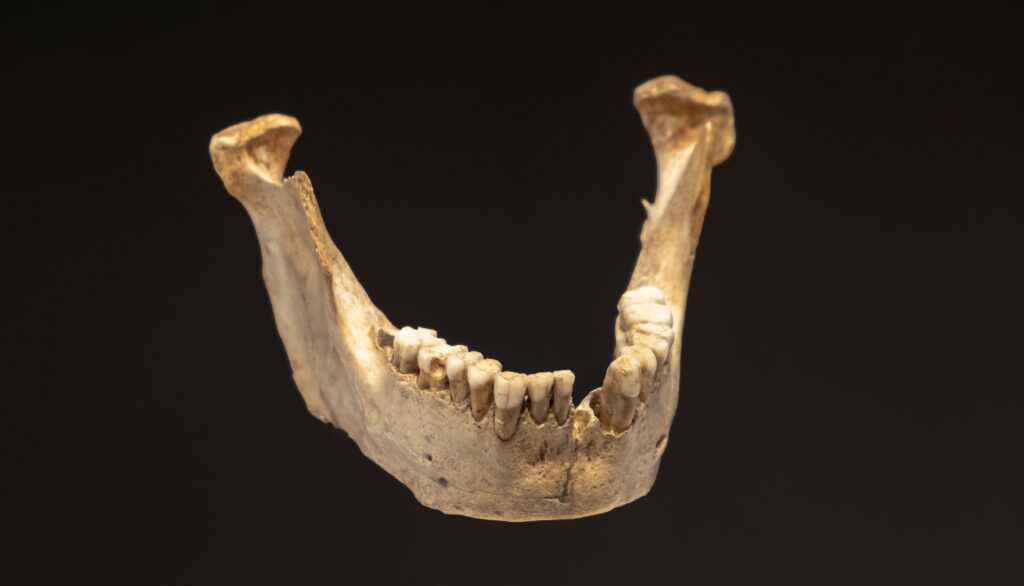A jawbone fossil found off the coast of Taiwan has given scientists new information about the Denisovan species. This is the most complete Denisovan fossil ever discovered. The jawbone was found by fishers in the Penghu Channel and could change the way we understand this ancient human relative. The Denisovans once lived in many different environments, and this discovery helps us learn more about their life.
A Powerful Jaw From the Deep
The jawbone was discovered by local fishers. The fossil belonged to a male Denisovan who lived at least 10,000 years ago. Scientists believe it shows how strong and powerful Denisovans were. The jaw had large molars, which are similar to those seen in another Denisovan jawbone found in Tibet. The large teeth suggest that Denisovans might have eaten tough plants or roots.
“We now have a clearer idea of what Denisovans looked like,” said Professor Enrico Cappellini. He is a co-author of the study. “The jawbone gives us more information about their appearance.”
The jawbone was found to have ancient proteins, though no DNA was extracted. The proteins confirmed that the fossil belonged to a Denisovan. This is a major breakthrough because scientists often rely on DNA to identify ancient species. Despite the lack of DNA, the proteins gave enough information to place the fossil within the Denisovan lineage.
A Species That Lived in Many Environments
The Denisovan jawbone found in Taiwan is important for another reason. It shows that Denisovans lived in many different environments. Fossils linked to the species have also been found in Siberia and Tibet. These places are very cold. But the fossil from Taiwan shows that Denisovans also lived in warmer areas, such as tropical forests.
“These fossils come from very different climates,” said Professor Cappellini. “It shows that Denisovans were adaptable and could live in both cold and warm regions.”
The first Denisovan remains were discovered in Siberia. They were just a few bones and teeth. Later, a jawbone found in Tibet showed that Denisovans lived in very cold places, with temperatures as low as -30°C. But the fossil from Taiwan suggests they also lived in warm places, possibly near water buffalo and tropical plants. This shows that Denisovans were able to survive in many types of ecosystems.
Are Denisovans and Homo Longi the Same?
The discovery of the Denisovan jawbone also raises a big question: Are Denisovans the same as Homo longi? Homo longi is another ancient species, also known as “Dragon Man.” A nearly complete skull of Homo longi was found in China in 2021. Some scientists believe Homo longi and Denisovans are related, or even the same species.
Professor Chris Stringer, an expert at the Natural History Museum in London, said this discovery adds weight to the idea that Denisovans and Homo longi were closely related. He said, “The new jawbone shows that Denisovans lived in many environments, from frozen plains to tropical forests. The question now is whether Homo longi should be called Denisovans—or if Denisovans should be called Homo longi.”
This debate is still ongoing, and scientists hope to learn more through further research. The new fossil adds to our understanding of the diversity of ancient human species. It is an important part of the puzzle that helps us understand where Denisovans fit in the history of human evolution.
What Does This Find Mean for Our Understanding of Human Evolution?
This new discovery helps scientists learn more about the Denisovan species. Until recently, Denisovans were known only from DNA found in bones. The jawbone found in Taiwan is now the most complete Denisovan fossil ever found. It provides us with a better understanding of what these ancient humans looked like and where they lived.
The study of Denisovans is still in its early stages. Scientists are working hard to understand more about these ancient humans. They want to know how Denisovans lived, how they adapted to different climates, and how they interacted with other species like Neanderthals and early humans.
The study of the Denisovan jawbone was published in the journal Science. This find will help scientists continue to piece together the story of our ancient human relatives.


